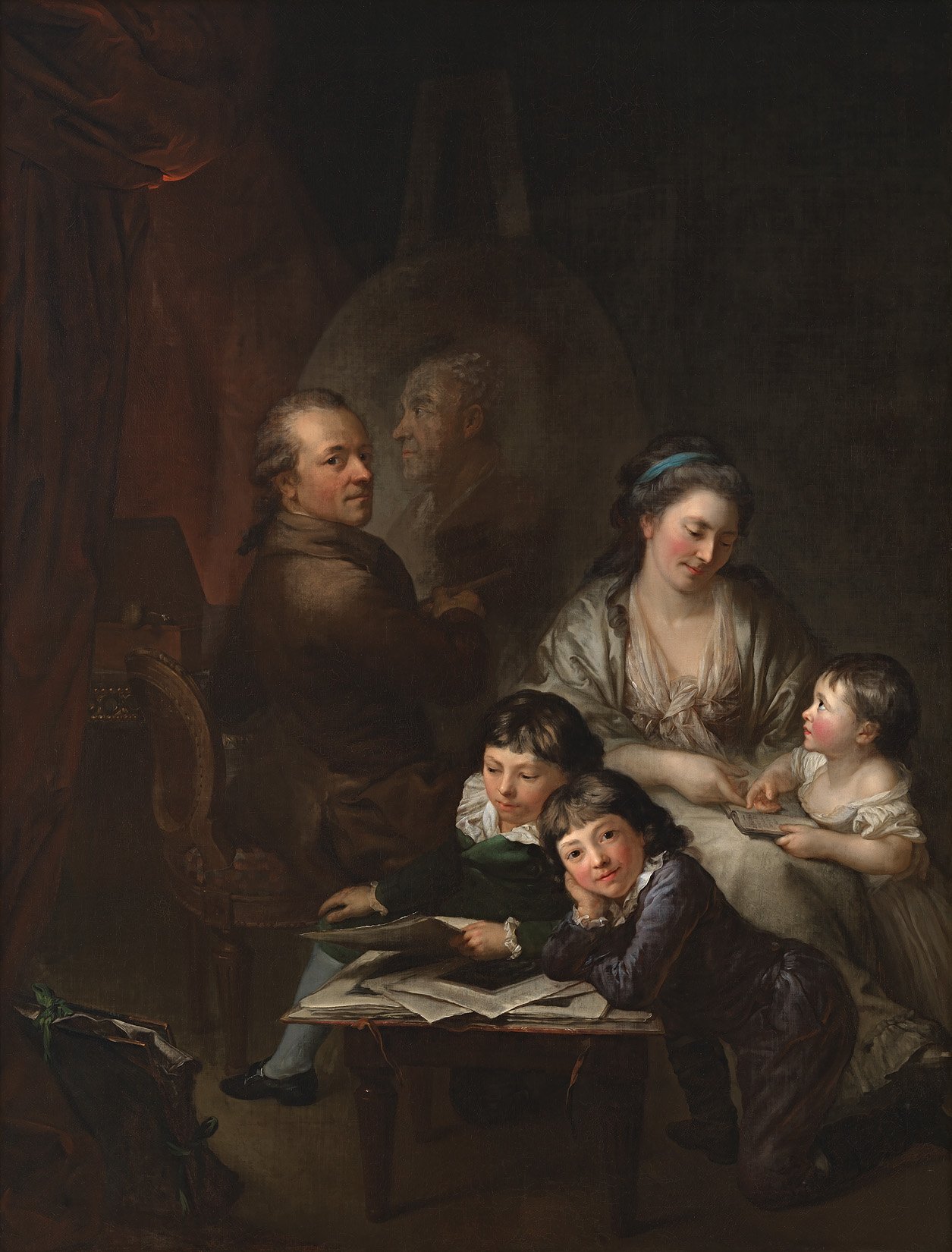Anton Graff
The artist's family in front of the portrait of Johann Georg Sulzer, 1785

Anton Graff
The artist's family in front of the portrait of Johann Georg Sulzer, 1785
Kunst Museum Winterthur, Stiftung Oskar Reinhart, Ankauf, 1949
Foto: SIK ISEA, Zürich (Philipp Hitz)
Anton Graff was the most important portraitist of the German Enlightenment. With his portraits of the bourgeoisie and nobility, of bankers and entrepreneurs, of poets and thinkers, he gave a face to this epoch as a unique chronicler.
The Winterthur-born artist went through an international career that carried his reputation and his paintings from Winterthur to Vienna and from Moscow to London and Paris, although he spent most of his life working in Dresden, Leipzig and Berlin. Graff's mastery was, in the words of the philosopher Johann Georg Sulzer, «to look into the very depths of the soul». However, he did not portray his contemporaries in the gesture of courtly representation, as was customary at the time; rather, he was interested in carving out the character of the portrayed, discovering their individuality, and reflecting their spiritual and mental qualities.
The private depiction of his family is one of the largest formats and undoubtedly one of the most important paintings in Graff's oeuvre. Commissioned by the Duke of Courland, it expresses the esteem in which the aristocrat held the artist. For it documents not only the growing cult of artistic genius at the time, but also the bourgeois emancipation of the Enlightenment. The family portrait contains various lines of relationship, for example between the generations and the sexes; yet also in the posture of the individual figures. While the two sons in the foreground are looking at various prints, the daughter is being guided in reading by her mother. The keyboard instrument in the background may indicate the harmony of family life. In this painting, the artist pleads for an upbringing of children to become educated individuals, in which art plays a significant role. These are the Enlightenment ideals of Johann Georg Sulzer, Graff's father-in-law, in whose portrait, seen in the middle ground, the composition culminates.


